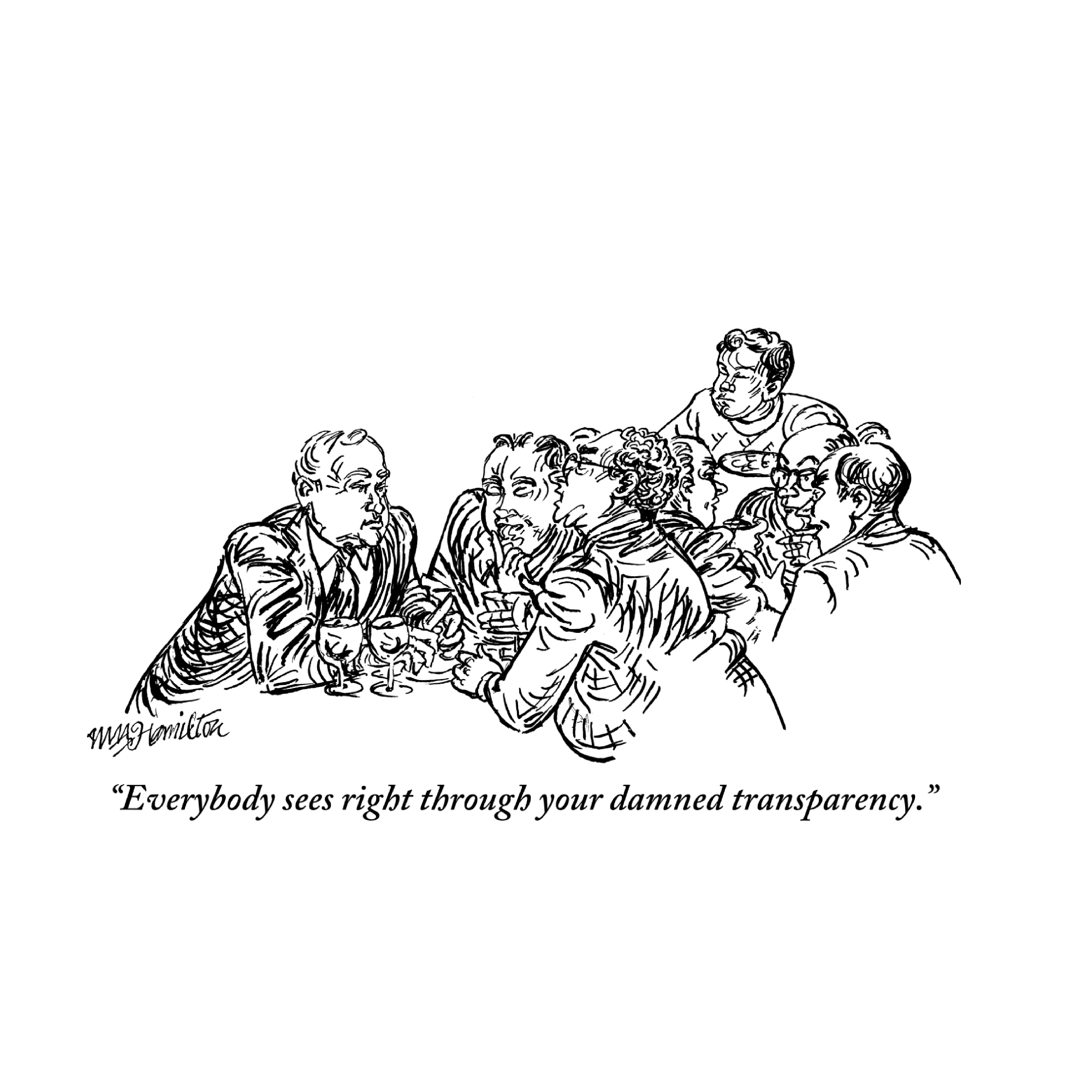Industry Transparency Is a One-Way Mirror

Advertisers have found many ways to dominate and commoditize their ad agency relationships. Transparency is the latest hot issue, justifying outrage over certain media agency practices and setting the stage for reviews of media contracts and fees. Agency hiring and firing remain another advertiser favorite, and the pace of agency replacement has certainly quickened over time. Next in line are declining fees and growing creative Scopes of Work, along with benchmarking studies, the threat of internal agencies, intellectual property disputes, project-based bidding and lengthened payment terms.
Transparency is a wonderful all-inclusive term for these activities. Advertisers have made agency operations transparent -- their organizations, salary costs (by seniority and department), overhead costs (line by line), creative and analytical capabilities, production capabilities, pitching strategies, intellectual property concerns, contract practices, cashflow needs and negotiation weaknesses.
What a change from the media commission days, when agency operations were a "black box" for clients! Agencies were special and creative; no one knew how they were organized, how many people they had, how the agency people were paid, and how agencies accomplished their creative magic. One thing was sure, though: A single AOR in those days was completely dedicated to helping clients develop and grow their brands.
Today's transparency is the transparency of a one-way mirror. Advertisers can see into agencies; agencies can see only their own reflections. We have watched enough police dramas on TV to know what a one-way mirror is: a sheet of glass that can be seen through from one side and is a mirror on the other, used especially for observation of criminal suspects (per Dictionary.com).
Agencies have little transparency into client operations or concerns. Agencies no longer provide input to or have access to client five-year marketing plans; there is insufficient exclusivity, longevity or trust for this kind of strategic intimacy. A client will not provide confidential access to the 20-plus agencies that provide services across all media types.
Agencies have little transparency or influence over Scope of Work planning, or fee-setting methodologies, or into briefing or ad approval processes. These remain under the tight control of their clients.
The real benefactors of transparency are the consultants who live off advertiser-agency relationships: the media auditors, contract auditors, search consultants, compensation specialists, cost consultants and benchmarkers. This must be an attractive business -- even the vaunted Boston Consulting Group, usually known as an expensive blue-chip strategy consulting firm, is engaged in agency cost benchmarking -- an activity that one consulting competitor described to me, with undisguised contempt, as bottom-feeding of the worst kind.
The open question is "how have advertisers benefited from increased transparency?" On the one hand, advertisers have driven down the price they pay for agency services by 4.5% per year, compounded over the past 20 years, according to my research. This is not insignificant. Price for agency services has been cut by more than two-thirds since 1992.
On the other hand, increased transparency and its price erosion have led to a severe stretching of agency resources and capabilities. Agency salaries lag those of consulting firms, Google and Facebook by a significant margin, and ad agencies no longer attract the best and the brightest. Transparency has weakened marquee ad agencies.
Probably the greatest cost of transparency has been the loss of agencies as strategic partners, committed to help clients figure out how to grow brands in today's complicated markets. Agencies are now commodity-like suppliers, waiting to be told what to do and what price they will be given for the job. Advertisers are in the driver's seat.
Agency senior executives are certainly complicit in the decline of their agencies' capabilities. Agency executives stood by while their clients attacked them on all fronts. Agencies now must dig themselves out of a very deep hole, and they have little money or resources to do so.
How well is transparency working for advertisers? All we know now is that legacy brands are pretty much dead in the water, and major corporations are puzzled about how to reinvigorate brand growth in an era of e-commerce and Millennial consumers. CMOs last only 3-4 years in their jobs, held accountable for the failure of marketing to rekindle brand growth.
The extensive efforts to create transparency over the past few years have had consequences for all parties.
Transparency has been less than a mixed blessing and short of a complete failure. It's hardly a blueprint for the future.
Cartoon credit: William Hamilton, The New Yorker, The Cartoon Bank. With permission.
Click the social buttons above or below to share this story with your friends and colleagues.
The opinions and points of view expressed in this content are exclusively the views of the author and/or subject(s) and do not necessarily represent the views of MediaVillage.com/MyersBizNet, Inc. management or associated writers.


